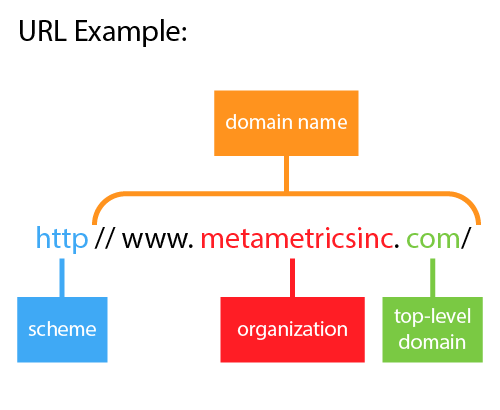Human beings store a large amount of information in concise codes, such as short strings of texts or numbers. For example, a lot of information is encoded in a postal address. When you receive a letter, the first thing you’ll probably check is the sender’s postal address. Though short, the postal address can tell you if the sender is a person, a business, or the government. It also informs you if the letter was sent from a post office box, an apartment, or a house. You even learn the sender’s city, state, and country. These are all important pieces of information that help clue you in to what you are about to open. If the sender’s address looks strange, you may decide not to open it at all!
Like a postal address, a web address tells you where a web page is located. A web address is also known as a URL, which stands for Uniform Resource Locator. A URL comprises several components, each giving you different information about the page you are about to open. The first part of the URL is the scheme. Although there are a variety of schemes, webpages typically have http or https lead their addresses. In general, https webpages are preferred over http webpages because the former supports a more secure browsing environment. Information on https websites is encrypted and travels through a safe tunnel to its destination. As some of you may have already guessed, the last “s” in “https” stands for “secure.”
The most prominent component of a web address is the domain name. The domain name appears right after the scheme and is typically separated into three segments by periods. The middle segment is often the name of the organization who owns the site. The last segment of the domain name is often referred to as the top-level domain in that it provides the most general information on the nature of the organization. In the United States, there are five main top-level domains, representing five essential types of organization in the society: ".edu" endings are used by web addresses for schools and universities; the government uses the ending ".gov"; businesses use ".com"; non-profit organizations use ".org"; and network providers use the ending ".net."
